Vancouver History Tidbits: Robson, Fast Ferries, Massey Tunnel and the UBC Steam Tunnels
I was struggling to find inspiration this morning although I knew I wanted to publish a history post this week. I put the call out on Twitter and received several inquiries about Vancouver history landmarks and tidbits. Since the response was so great, this will be a new series of user-generated responses to local history questions.
@Jemmen – Asked about West End history and Robson Street.
I haven’t gone too in-depth about the history of Robson but I do have a post about all the important Robsons in Vancouver’s history.
Named after John Robson who was the Premier of BC from 1889-1892. It began its commercial history early on with retail shops and restaurants springing up in 1985.
It also became known as Robsonstrasse which was “a reflection of the European shopkeepers who operated the many small delicatessens, patisseries, and chic boutiques that populated the street.†[from Robson, More Than a Street]
As for the West End, I also have some articles about various landmarks in the area formerly known as the boggy, soggy, West End Forest. [The Three Greenhorns] [Lord Roberts School] [Roedde House] [Joe Fortes]
@duanestorey – Wondered about the steam tunnels at UBC
Listed as one of the “90 things to do before you graduate” there are rumoured to be half a dozen entry points to these hot and hazardous passageways under the campus of UBC, including unlocked manhole covers and freight elevators that lead to subbasements. I found a personal account over on this site.
I’ve been in the steam tunnels, which are all locked up now, and in the vortex. The steam tunnels are utility passages where the steam is transferred from building to building. The vortex is the storm sewer system, or flood water actually, not sewage. I remember one of my most memorable nights buildering was spent in the storm system.
Kai and I were looking for the entrance to these steam tunnels, so we were checking all the manhole covers on campus. There was one manhole behind the biology building, actually about 50m from your Oceanography dyno problem. Anyways, we lifted the cover and it was the entrance to a huge underground water tank. A storm runoff type of thing, I think they pump it out when it gets to a certain level. So we looked around and found a refrigerated big suitcase type thing, and a bunch of rope, and lowered it down into the tank. Now we had a boat. So we went boating inside these underground caverns, in this gross water. In our box, our insulated box used for tools or something.
@fuzzydave – Didn’t live in Vancouver at the time of the “Fast Ferry” scandal and wanted to know the story there.
In the 1990s the NDP government, headed by Premier Glen Clark, commissioned the building of a fleet of several super ferries and Fast Cat catamarans. The reason was to help alleviate traffic concerns for those living around the terminals and get passengers and vehicles to and from the Island in a more efficient manner. The ships built were smaller (with room for fewer vehicles) but the cruise time was supposed to be cut by at least 30 minutes, meaning more sailings to cover the crowds. Unfortunately the cost of the initiative ballooned to almost $460 million (at our expense) and was years behind schedule. More problems included hazardous wakes causes by the vessels, high fuel consumption, the passenger deck was smaller and they actually ended up taking longer to cross the Straight.
@tawcan – Wanted to know a bit more about the Massey Tunnel
I’ll answer this one with help from VancouverHistory.ca. The Deas Island Tunnel opened July 15, 1959 (connecting Richmond and North Delta/Ladner) although it had been open to (tolled) traffic since April 1958, and the Queen of England herself was on hand for the ceremony. In fact on the same trip, the Queen Elizabeth Theatre was named in her honor. In 1964 the tunnel was renamed the George Massey Tunnel, for the minister of highways, and tolls were removed. It’s actually the lowest point of any road in Canada, dropping beneath the Fraser River to 20 meters below sea level.
I’ll continue the series later this week where I will answer the following questions from my contacts on Twitter.
@kdmurray – Some Burrard Inlet History
@CynnamonS – The industrial past of Granville Island
@jbuffoonery – Vancouver’s Neon History
@6oz – The Guinness Family’s Influence
@TylerIngram – History of the McBarge
@davidshore – Why the CPR landed in Vancouver (as opposed to Port Moody etc.)

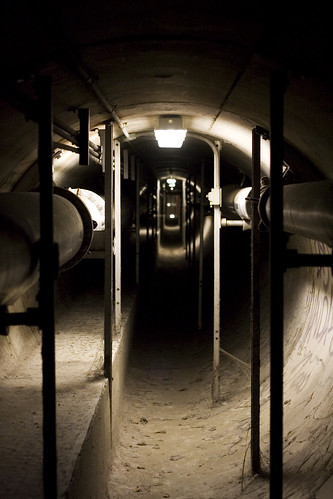


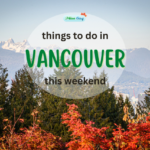
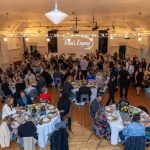

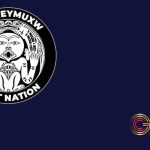
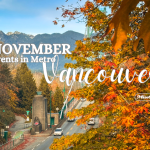
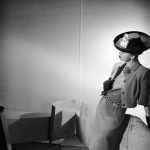

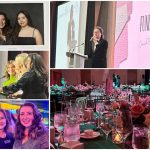
9 Comments — Comments Are Closed
Thanks for these quick historical capsules. A bunch of these (including the Fast Ferries scandal and the Massey Tunnel) were things’ that I’d seen or heard about but didn’t know much more than the name. After nearly 3 1/2 years here (Time flies, eh?), I can no longer claim immigrant ignorance.
i think it was @tyleringram who mentioned Expo86 with the new Expo coming soon i think it would be great if you did a whole series on when it was here. i remember it was the very first time i ever rode the skytrain as yes it was for many people it was just cool cause we lived in Surrey so we got to ride it the whole way.
Great post, Rebecca. Funny about the steam tunnels, I was going to mention drainage tunnels and abandoned places in Vancouver. There is/was a group called the Wraiths that used to go on adventures through these little-known places. Illegal, but completely fascinating. Check out their account of their visit to the McBarge (that could be another Vancouver History post altogether).
Keep up the great work!
@Tim awesome thanks for the reminder – John’s friend told us about that site a while ago, I think when they did their Riverview or Woodlands excursions. I’ll look’em up for the McBarge post for sure! 🙂
I read somewhere (in a westend history website somewhere) that the West End was named after one of the schools that used to be here or something?
I like finding out more about history of where I now reside!
I read about Joe Fortes and his history. That’s pretty cool 🙂 As with all the other history around Vancouver 🙂
Just another little tidbit about the Massey Tunnel…if you go into Deas Island Park, you can ride your bike or hike your way along the river to where the Massey Tunnel is, and there is the plaque for the ceremony of when the Queen of England officially opened it.
Wow, I had no idea that there were underground tunnels in UBC. Although to be honest, I never really stuck around and explored. Too bad they’re closed off now…I would love to go check it out
there is a warehouse in new westminster/delta area that is by frankie g’s pub in new westminster. It was used to build the warplanes for WW II. in fact the area by queensborough was used to land the planes and test them as they were away from residential areas. i found the info out as i was delivering to the warehouse/ancient hangar 8 months ago. might be something to look into.
Steve mentions the warplane factory – it was actually Pacific Veneers Ltd. They manufactured plywood that was used to build Mosquito bombers, although no aircraft were built in New Westminster. However, aircraft were built in Richmond during WWII – Boeing Catalina flying boats (named Canso’s in the British Empire) were built near the south airport at the old BCIT site (now London Aviation). Some of the structure remains in the form of a concrete parking lot.
Nearby is the community of Burkeville – named after the president of Boeing aircraft at that time. It was built to house people who worked at the plant.